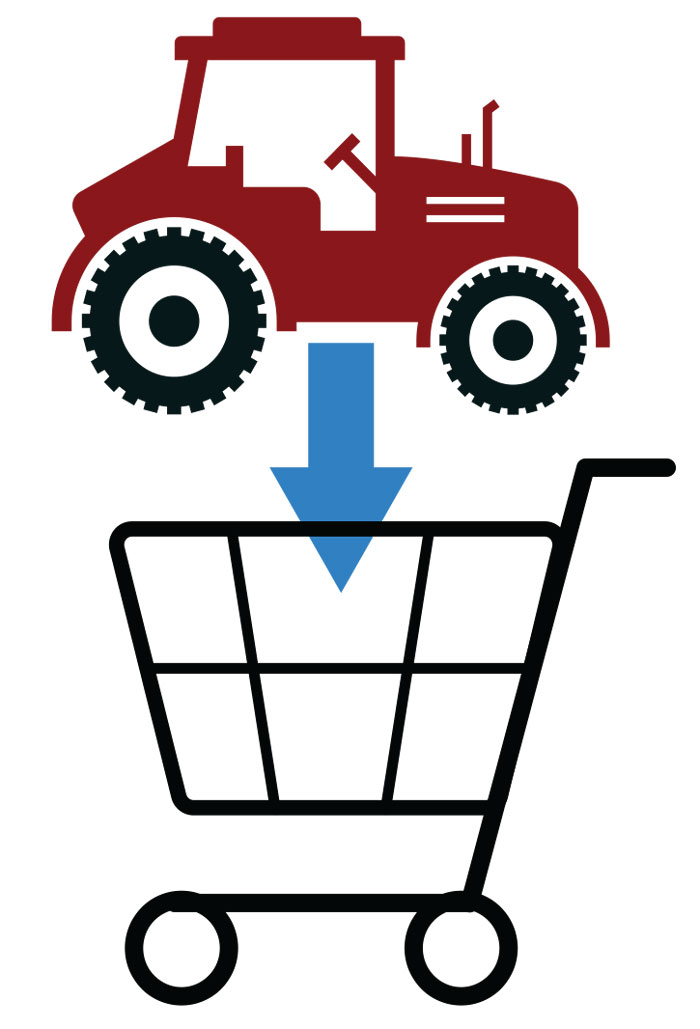Auctions have quickly changed over the past few years. COVID-19 ushered in more online-only auctions and fewer live auctions from a central location. The norm for most of my career was in-person auctions with online bidding available. I liked this auction style because you got the best of both worlds. The auctioneer was chanting the current bid, ring men were yelling, “Yip,” acknowledging the next high bid and, somewhat covertly, the internet bidders were sneaking into the action. All this adds to the excitement of the fight for the next higher dollar.
Online-only auctions have been around for 10-plus years, and they offer a different kind of bidding experience. Unlike a live auction, where the bidding starts and finishes in a few minutes, online-only auctions usually open for bids a week or more in advance. Bids slowly start to come in, and by the day the auction closes, 75-85% of the equipment’s value has been bid.

I don’t usually pay attention to where the bid is in an online auction until just a few hours remain. In my experience, when the last day of bidding starts, the bid is about 50% of the value of the machine, and any additional value is added in the last couple hours of bidding. The final 45-60 minutes of the auction add 10-15% of value.
However, this isn’t what is happening heading into the 2023 auction season. Instead, an inordinately high percentage of the equipment’s value is coming in at the last minute.
I saw this in 2 auctions I watched in late August. I watched bidding on a 2020 John Deere X9 1100 combine and 3 2022 John Deere 9900 choppers. On the last day of the auction, the X9 was at $300,000 while the 9900 choppers were in the $250,000-$275,000 range.
With an hour to go, the high bid for the X9 was just under $400,000. It closed out at $504,000 — a 26% increase in that final hour. As for the 9900s, they jumped into the $275,000-$302,000 range with an hour to go. They finished at $425,000, $427,000 and $402,000 respectively — an increase of 40-46%.
Each machine earned over $100,000 worth of bids in the last hour — actually, the last 45 minutes.
So why is this important? As I watched the bidding activity, I was initially worried about the ending bid and what it would mean to the overall market. I thought I was looking at the beginning of the slide in equipment values, which up to this point had only been gradual. In the end, however, the machines sold for prices consistent with previous auction results. What was concerning, though, was the amount of money added with very little time left in the auction.
“I believe the winning bidders were watching the auction with intentions other than simply buying a combine or a chopper…”
I believe the winning bidders were watching the auction with intentions other than simply buying a combine or a chopper. I don’t think they were trying to win — I think they were trying not to lose. As bidding progressed, it looked like proxy bids were placed, and a few bids were triggering the proxies. When the live bidders started bidding with 30-45 minutes left in the auction, values started growing quickly. As I said earlier, normal activity would have meant each machine closed out with an additional $30,000 in value, not over $100,000.
I have talked about buying groups and how they are becoming more and more defined as to what group a buyer can participate in. The rigidness of these groups showed up in the auctions I watched. The buyers in the “late model, low hours” group — the ones who were bidding in these auctions — have been in a situation where they had little to choose from. Delays have forced them to put more hours on machines and face higher repair bills than expected over the past 3 years. When machines like these come up, buyers in this group will take a swing at getting the equipment rather than wait for the dealer to get another batch of trades in.
With factory delays decreasing and more machines delivered on time, more used machines are showing up on dealership lots in increasing numbers, and they will continue to. As the 2023 auction season gets underway, the number of late-model, low-hour machines will increase at auction, possibly pushing more used buyers into a “wait and see” buying strategy this fall.






